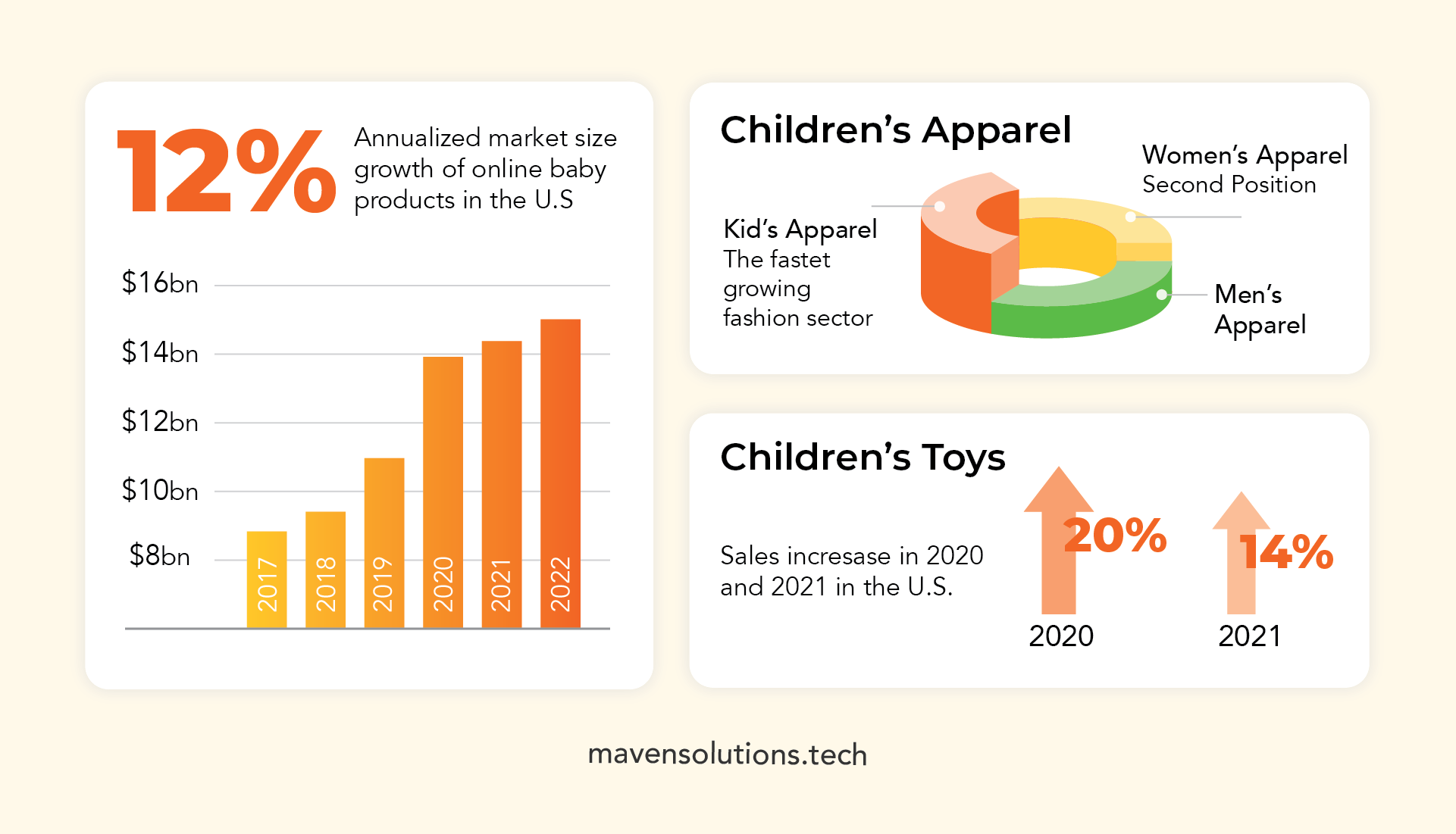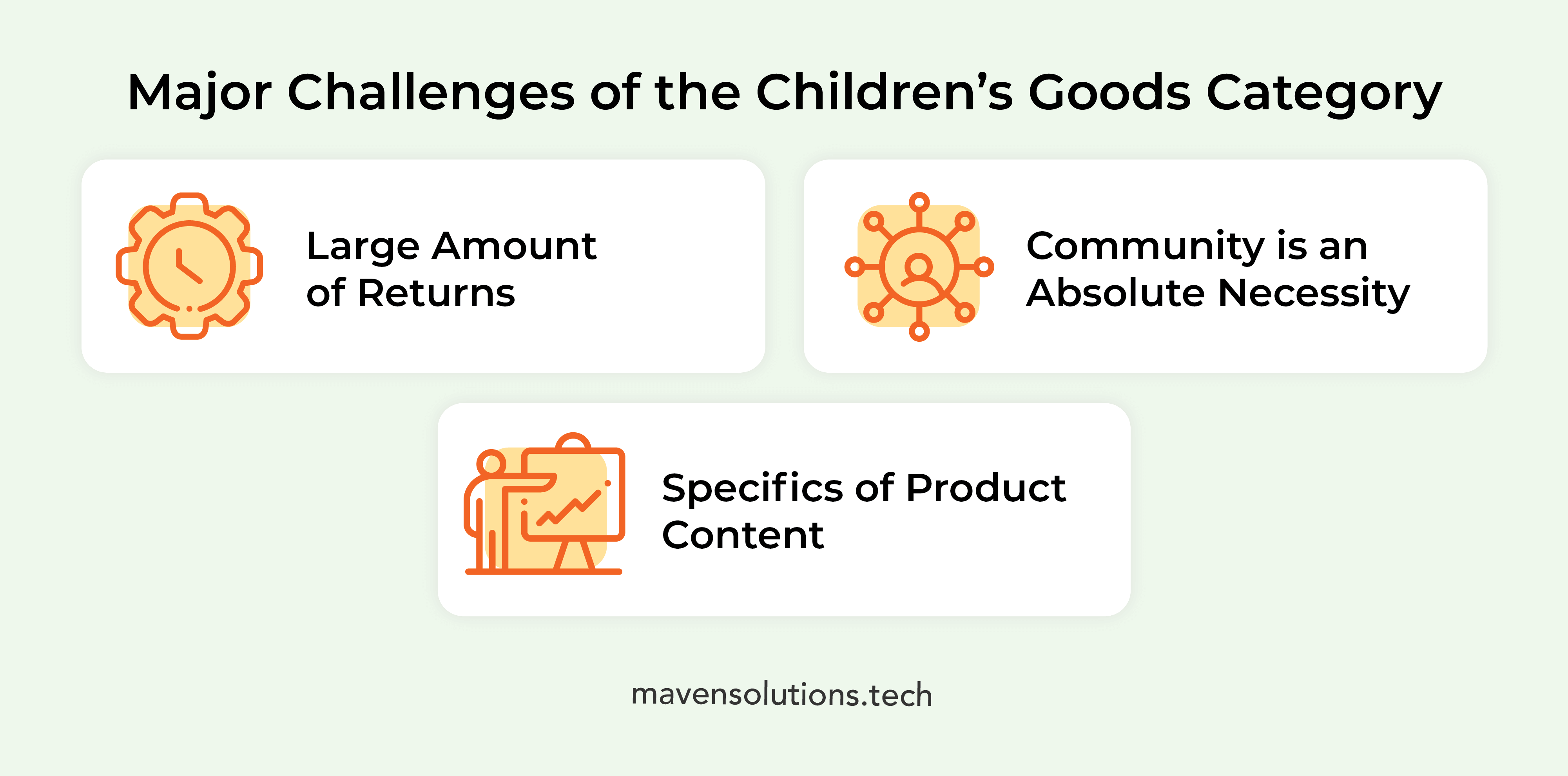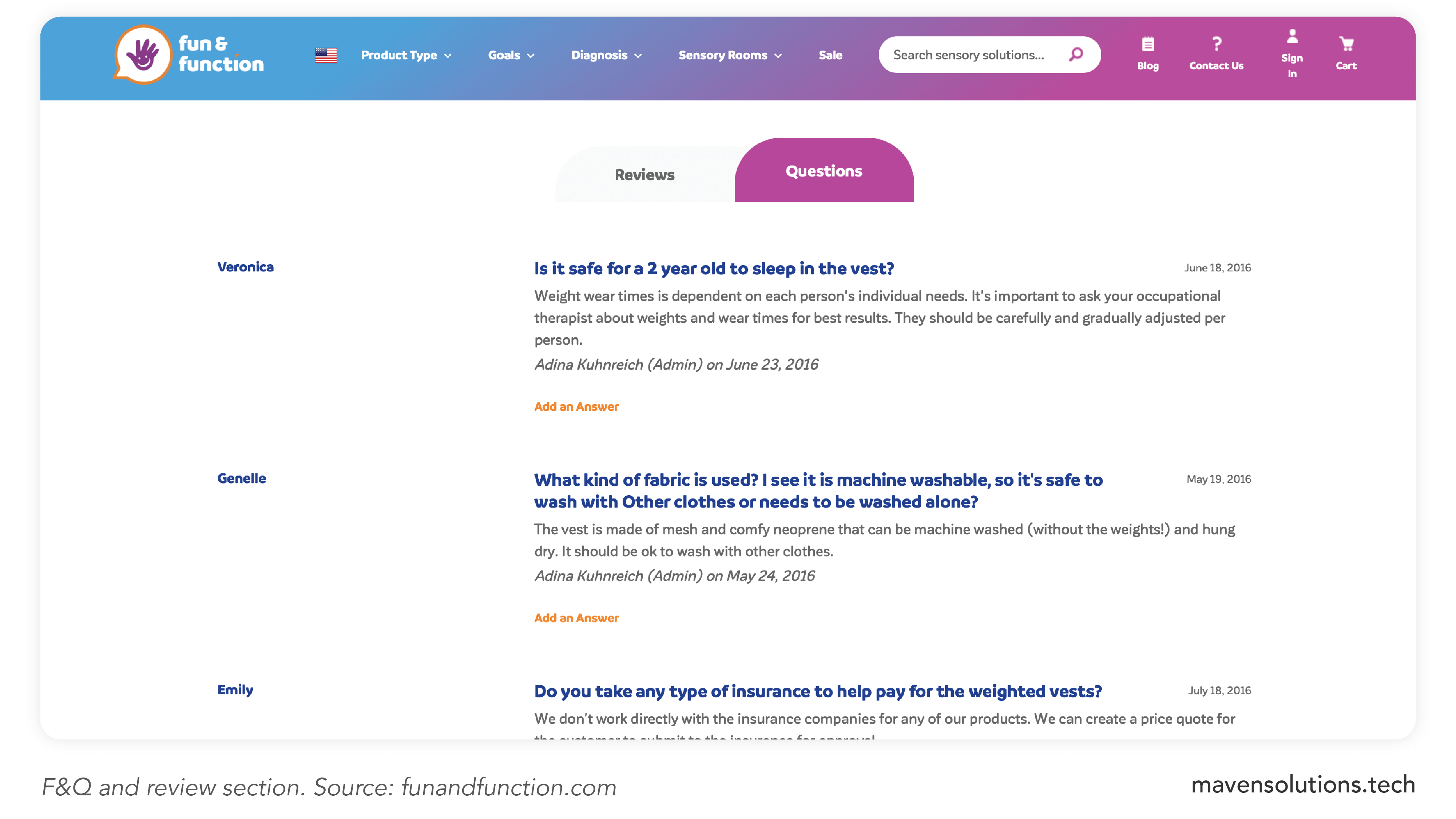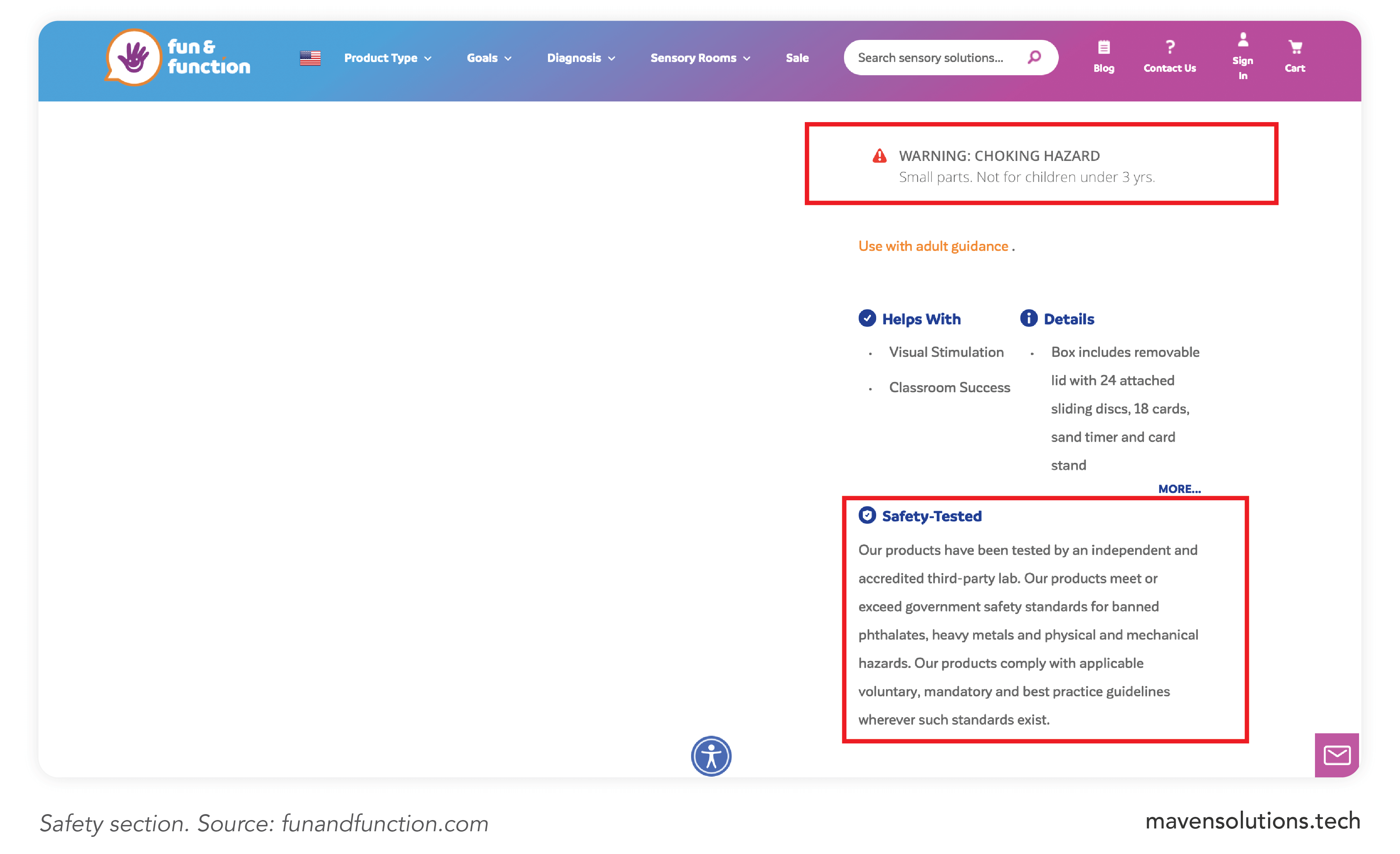 8 min read
8 min read How to Sell Children’s Products Online: 3 Eye-Opening Insights from Market Expert
 8 min read
8 min read Selling children’s products online is a conceptually different task from selling other goods. It begins with a significant shift in the paradigm of “who your customer is.” Even though the target market of these goods is children, their parents are the ones who will actually purchase these goods. And this is only the tip of the iceberg.
This unique nature of retail children’s products requires a change in the operational and strategic business approach. More importantly, if not addressed properly, this unique nature can create failure in the marketplace.
Maven is a trusted partner for retailers of children’s goods. Since 2010, we’ve helped companies like Babypark and Fun & Function become leaders in their niches. Those experiences helped us better understand the most crucial challenges of the category, and how to overcome these issues effectively. Below is the list of top 3 insights to be aware of while selling kid’s products online.
Children’s Products Online Sales: a Market Overview

Sales of children’s products have been stable so far. According to IBISWorld, the annual market size growth in the U.S is 6% (2017-2022). Because most of the world has already recovered from the pandemic, sales have leveled off, but the positive trend has remained unchanged.
Plus, a 1% increase in the birth rate in the U.S. has also been improving sales in a positive way. It’s been the first increase since 2014, and experts expect it to continue in the next few years.
The stable growth has remained within almost every subcategory of children’s products – from food and apparel to toys and furniture. Let’s briefly review these major subcategories.
Kid’s toys subcategory
Toys remain a top subcategory of kid’s products. While people were stuck at home during the COVID-19 pandemic, they spent more on toys. Sales increased by 20% in 2020 and 14% in 2021. At the same time, unit sales had an 8% increase in recent years while the average price was up 4%.
Most children’s toys come to the U.S from China, and the U.S has remained the top importer of toys in the world, followed by Germany and the UK. The supply chain crisis has impacted delays, but the effect on the subcategory has been negligible.
The most popular toy products in 2021 are explorative toys with 35% year-over-year growth in total sales, plush with 29%, and action figures & accessories with 24%
Childrenswear subcategory
Children’s apparel sales have grown insanely fast. The slight decrease in volumes in the first half of 2020 was replaced by enormous growth at the end of the year and in 2021. Now, children’s wear represents about a third of total apparel sales in the U.S. and has been growing faster than men’s or women’s wear.
The positive sales trend has affected the competition. On the one hand, big players like Walmart have been launching new private-label and partnerships to get over the market share. On the other hand, in the era of post-COVID buying behavior, customers have shown a tendency to value the shopping experience more than anything else. This could be a growth point for smaller retailers.
Retailers with major market shares are Carter’s, Adidas, Benetton Group, and Nike.
Major Challenges of the Children’s Goods Category

Large Amount or Returns
For children’s retailers, the high season brings not only strong sales but logistics challenges. Children unhappy with their Black Friday or Christmas presents return or exchange the goods.
In addition to that, even the off-season is not free of these logistics challenges. The overall tendency of higher return rates for products that were bought online, plus the fact that clothing, for example, has the highest return rate of all products, has placed the return and refund policy within the top priorities for every retailer for children’s apparel.
There are a million reasons why consumers return goods that were bought online, but the biggest reason is that adults usually make the wrong decisions when buying goods for their children.
To overcome the challenge of returns for children’s products online, consider 3 strategic steps:
First, ensure transparency and consistency in communication regarding returns and refunds. Be loud about how easily customers can return and exchange products. Make returns part of your marketing. This will drive customers’ impulse buying behavior, so they will not fear a wrong decision.
Second, consider expanding your customer support department. This can be achieved by implementing the Customer Relationships Management system. This software solution can help automate work with customers and increase the efficiency of the whole support team.
Our client, Printkick, is an excellent example of how a CRM can boost the efficiency of a business. With the implementation of a customized system, we set up the commutation process to make communication more streamlined, convenient, and effective.
Even more, CRM has also removed a bottleneck to growth. With a smooth process of working with customers, Printkick was able to process 10 or even 100 times more orders within the same time.
Finally, consider auditing your overall supply chain process. It might sound like an overreaction, but it is a typical case that, for example, legacy software hinders growth. Perhaps your workflow or an ERP system is hindering the streamlining of the returns process.
Community is an absolute necessity
Another crucial challenge of children’s online retail is the necessity of community functionality. This originates from the nature of the kid’s retail. When purchasing, adults seek to engage with other adults or gain advice from an expert regarding a product.
For example, imagine a person is buying baby formula. There are tons of different brands and versions of it on the market. If this person has not researched the topic and a doctor did not advise a specific brand, it would be challenging to choose one.
How helpful would it be if an online store had a detailed FAQ section with hundreds of reviews from parents around the country? That is what your customers need.
Features like reviews, FAQs, blogs, and other product-related content are a must-have for children’s online stores. Creating a powerful knowledge hub will help your customer make a wiser choice, decreasing the number of returns, and boosting the retention rate.

The key component of this process is engaging content. Consider creating video reviews and online sessions for parents to gain a first-hand introduction to goods. Based on the subcategory, this content could be customized, but the idea remains unchanged. Help your customer make the right choice, and it will pay dividends.
Fun & Function is a great example of how a community makes a difference. F&F sells products for children with special needs. These products are made for specific use cases and goals. Imagine how difficult it is to choose the right product for a child with special needs without seeing the product in person.
Fun & Function implemented a great deal of educational content and built a review and FAQ sections, guides, and related content. It has positively affected sales and the customer experience, so the retention rate has remained high throughout the years.
Specifics of Product Content
The last major challenge is the complexity of children’s products. Parents care about their own children, and they want to make sure that a product sold on a store shelf is safe. This issue needs to be addressed in an online store as well.
All possible safety and certification labels should be displayed beside other product-related content like characteristics, photos, or size charts. It is crucial to be consistent and detail-oriented with this. You should show every single existing safety label and any other information regarding safety.
Like with returns, be vocal about these certificates. Make them a part of your marketing. Use them to build trust with the customers, so they know you care about safety.

To handle this complex set of product content, consider the automation of a process. While adding every single product to a website is time-consuming and costs a lot of money, these expenses can be minimized by implementing Product Information Management software.
This service works on 3 primary levels.
- From the start, the PIM software helps collect and store data from different suppliers.
- Then, it becomes a single workspace for the whole team to manage and enrich raw data with valuable content. F
- Finally, it creates a catalog that could be easily synched with an eCommerce platform.
PIM creates an agile process of working with data and boosts up the main KPIs of a content team, that is, the number of content processed per unit of time and the number of new content added to a website per unit of time.
More importantly, these advantages can happen with zero investment in the hiring process. All these could be leveled up within an existing content team or even with reduced size.
To Sum Up
Every product category is unique in terms of strategy, challenges, and opportunities. Children’s products are no different. The nature of selling to adults rather than kids brings additional requirements into the buying process. From returns, content differences, and safety importance, items that we discussed, to minor issues like taxes or advertising.
The bottom line is that there’s always a solution for every problem. With the help of automation, consistency in business processes, and continuous analysis of a previous experience, you will be able to achieve sales supremacy.
Maven, in turn, can help you with speeding up this process. With our experience in building extensive and efficient eCommerce businesses, we know exactly what to do and when to do it. Call us today and get your children’s products online retail business audited for free!







 6 min read
6 min read